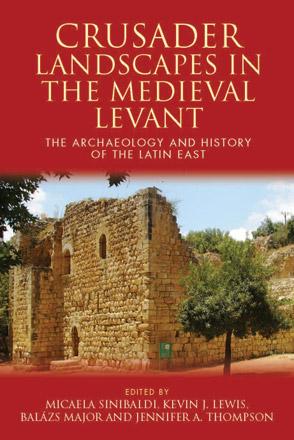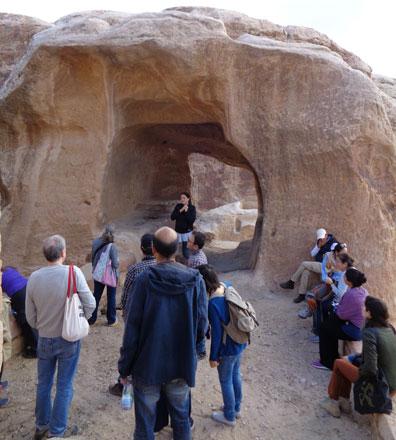You are here
Webinar held on Late Petra Project
By Saeb Rawashdeh - Mar 03,2021 - Last updated at Mar 03,2021

Al Wayra Castle built by King Balduin I in 1116 in Wadi Musa near Petra (Photo courtesy of Micaela Sinibaldi)
AMMAN — The Late Petra Project focuses on a settlement in the Petra region occupied after the Byzantine period, ca. 350-650AD, and revises the common idea that the rose-red city was abandoned after this time, according to an Italian archaeologist.
Speaking during a webinar titled “The Late Petra Project: Settlement in post-urban Petra”, organised by the French Institute for the Middle East (IFPO) in Amman, Micaela Sinibaldi said: “Such results originated from a systematic study of ceramics matched with documentary sources and a study of Building Archaeology.”
This study consists of an archaeological analysis of ancient buildings. It aims to provide information on the history and characteristic of the structure for a particular time period or type of building, according to Sinibaldi, a visiting professor at the Shanghai International Studies University, Institute for the Global History of Civilisations.
This discipline has been crucial for her research in Petra, especially to differentiate buildings of the Crusader-period from those of other eras, she said.
“The observation of these specific elements in Petra has revealed that the widespread notion according to which the Crusader-period settlement in Petra was dominant needed to be revised,” Sinibaldi said.
“On the other hand, the study shows the Mamluk period [1250-1517] was significant in both the Petra Valley and the region. Following the Byzantine period, the structures were more than just forts of the Crusader period,” she said.
There were built structures from the Islamic period, which served as habitations inside the Petra Valley and other villages of the Middle and Late Islamic periods just outside the valley, Sinibaldi said.
A key component of the Late Petra Project was the Islamic Baydha Project, which focuses on one of the main agricultural villages of the Petra region, Sinibaldi noted, adding that “here, settlement in the Middle and Late Islamic periods included a large number of village habitations and two mosques”.
She noted that the local members of the team are a key component of research on local building techniques for the later periods, in order to document their characteristics and chronological aspects.
“The hopes for the future of the project are that the mosques of Baydha will be reconstructed with traditional local building techniques, and therefore will contribute to the aspect of sustainable tourism and community engagement,” she said.
Related Articles
AMMAN — Academics have often relied on “old-fashioned views” when it comes to understanding the Crusader period, and these views have also a
AMMAN — The Islamic Beidha Project was launched in 2014, under the direction of Italian archaeologist Micaela Sinibaldi, to conduct excavati
AMMAN — A group of 10 foreign archaeologists recently concluded a tour of little-known Crusader-era sites in Jordan to learn more about the














